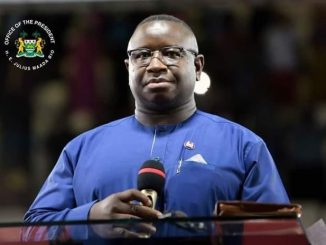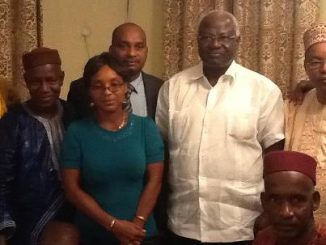


In Salvador, Bahia, a professor and project use African-oriented clothing to strengthen black identity and interest community in the African Diaspora
By Marques Travae
When I first got into “the Brazil thing”, as a black man, I was obviously attracted to the northeastern state of Bahia, particularly its capital city of Salvador. Between late December of 1999 until my first trip to Brazil and Salvador in late August of the year 2000, I was completely memorized with the image of Salvador, Bahia. It was right around that time that I got fully immersed with searching for information on the internet, which was perfect timing as at every free moment I had I was trying to learn more about “my new love”.
And that first trip was a magical as it could be.
As I detailed in one of my first pieces to appear online about Brazil, the differences between my arrival in Brazil at the airport in Guarulhos, São Paulo, and then São Paulo’s Congonhas Airport and then landing at the airport in Salvador, Bahia, was like night and day…literally. Back in the year 2000, it was pretty rare to see black people at the Guarulhos and Congonhas airport, a blaring contrast with the vastly diverse airport from which I departed the US, JFK in New York.
From the time I set foot on Bahian land, it seemed like I was surrounded by blackness. Black people of every shade everywhere! Salvador, Bahia, its scenery, weather and people gave me that down home feeling I would get from the many trips I made “down south” in Georgia visiting grandma, grandpa and all my aunts, uncles and cousins. But as much I remember about that first trip to Salvador, the food, the Pelourinho region, the women in the baiana outfits, the orixá statues in Dique do Tororó, the Ilê Aiyêshow was a night that most stands out in my mind. Ilê Aiyê is not just a musical group or a bloco afro. It is a cultural movement with the acknowledgement and appreciation of blackness at its very core.

Visiting Salvador as a whole, you will see far more dark-skinned black people than you would if you were to visit a city like São Paulo. And this blackness hits you when you go to an Ilê show. As I was being led around by a friend, I met there who was known as Marcus Gonçalves at the time, I was allowed access to the stage and backstage at the Ilê show. Both making my way through the crowd on the ground and being onstage that night, I was embraced by a sea of blackness. And this was no accident. As the story goes, to appreciate the beauty of the darkest shades of black skin, Ilê not only prohibited whites from joining its ranks, it also rejected potential members if their skin wasn’t dark enough. Apparently, this was the reason popular Axé/samba-reggae singer Margareth Menezes, a clearly brown-skinned black woman, also wasn’t allowed to join the group.
It was not only the blackness of Ilê members that grabbed you, it was also the African-oriented, red, yellow and black attire they wore. The outfits worn by Ilê were a sharp contrast to the suits, ties, casual attire and club wear worn by some of the popular Pagode groups of the time such as Negritude Júnior, Só pra Contrariar or Raça Negra.
Being at an Ilê show could literally make you think you were somewhere on the African continent. As Val Benvindo, niece of Ilê founded Antonio Carlos dos Santos, aka Vovô, said in a recent interview, in 44 years of the bloco’s existence, its legacy is the self-recognition and appreciation of black people. Further expounding on this comment, Val went on to say:
“Ever since it emerged, the idea was to always have an appreciation of the povo negro (black people), of the mulheres negras (black women), of the beauty of the black woman and of her empowerment.”
As Benvindo pointed out, Ilê Aiyê has also long been a proponent of the promotion of the beauty of the black woman, particularly those of the darker skin tones, and this is evident in its yearly “Deusa do Ébano”, or ‘Ebony Goddess’ competition is chosen to represent Ilê and black women for the whole year.
Being associated with such a group, a love of one’s African ancestry and African aesthetic would only come natural for someone is search of their identity or perhaps a strengthening of such an identity. This is the effect Ilê had on Maurício Souza Neto, who began to deeper analyze his blackness after coming in contact with group.

Originally from Rio de Janeiro, Maurício ended up moving to Bahia, originally to the city of Valença in the southern region of Bahia. But it was when he moved to Salvador when he began to further explore his black identity. And it was organizations such as Ilê Aiyê that inspired Maurício. The clothes and accessories worn by the bloco afro are important instruments that often help adherents on their paths to constructing a black identity that a country such as Brazil has a way of stripping away. Identification with the clothing that promotes an African aesthetic, these clothes then become more than simply apparel to dress the body, but a political symbol of resistance.
“When I moved to Salvador and saw Ilê, I saw there an aesthetic and a possibility of being a person. This aesthetic has not been present before in my life, and is due to a number of factors. One of them is the fact that I lived in a place where I did not have access to this culture, and I had no thoughts on issues involving my blackness, what it means being black and being a baiano (Bahian),” said Maurício.
After becoming attracted to visual in the form of the colorful clothing, Maurício was soon rocking other accessories such as turbans, bracelets and robes. And from the visual aesthetic, it was only natural that he would soon further explore a new identity in his view of the world. But as the transition began in his mind, he noted that it was the clothing that was attracting attention:
“In the workplaces even though it doesn’t happen much, I notice many crooked stares. In the street, yes, I hear jokes at times. Most moments are not so embarrassing, but funny. It’s already happened that a person comes up to ask for a blessing, as if I were some kind of sacerdote (priest),” he remembers with a laugh.

Although up to this point, Maurício can say that he hasn’t personally experienced any attacks due to the clothing he chooses to wear, he cannot ignore the fact that the story can be and often is different for others who wear clothing with obvious references to Africa, the continent that most Brazilians want nothing to do with.
“There is still a great deal of discrimination, especially because of the reference to the religions of African matrices, to which the aesthetics are associated with. And, in fact, it is also part of the religions, though not exclusively from them. I know people who would like to wear it, but they don’t wear it because of this association,” Mauricio says.
Attacks on religious adherents of African-oriented religions in Brazil such as Candomblé and Umbanda have been well-documented in the media and have become increasingly shocking in the brutality. The rejection of African-origin religions is just another manifestation of the anti-African sentiments so deeply rooted in Brazil. For this very reason, it is necessary that a re-education on Africa, its culture and history must go much further beyond than simply wearing African-influenced clothing. As I’ve seen people, both black and white, wearing apparel such as dashikis and cornrows in their hair, without a re-education and new mental view, using African visuals can become just the fashion “flavor of the month”, hot today, played tomorrow.
A re-visioning of Africa must take place not only in the world of fashion, but also in the streets and the classroom, in both universities as well as middle and high schools. This is particularly important in a country like Brazil where discussion of Africa and its people in the classroom usually starts in the 16thcentury with beginning of the importation of enslaved Africans and ends with the 1888 abolition of slavery. And the only way for this to happen is for persons engaged and educated in the topic start to have the influence to change this perspective in school curriculums.
Maurício, being a professor, knows the importance of Africanizing the classroom and how the slow process of change can start with something as simple as wearing African clothing:
“The use of ornaments in places is important because of visibility and representation. And because the body speaks. Having a black teacher in a school, a person aware of their role and social relevance is necessary. Showing all this through an aesthetic that speaks for itself is essential.”

Knowing how just wearing certain clothes can bring certain reactions, the professor acknowledges the need for a broader discussion and that such a simple thing can open a door to dialogue to address the place of black people in Brazilian society as well as the places blacks are expected and not expected to frequent.
“Being in a turban in one place is something that draws people’s attention. But I don’t necessarily use it to shock. It for necessity, yes, to stand as a black man and show that I know my place in society. Saying where I want to be placed, not where society wants to place me,” he said.
From black aesthetics to social media to affirmation of identity
In my experiences with Brazil in the past few decades, I can definitely confirm that two things that have played a huge part in the growth of black identity politics have been black aesthetics and the rise of social networking. How many times in the past decade have seen just common, everyday day people seem to just blow up on Facebook, YouTube, Twitter or Instagram? Social media not only made people famous, it’s also gotten people rich, helped businesses expand their audiences and provided an alternative method for people to reach the masses without having a lot of money to invest in advertising.
These networking tools have also been instrumental in the spread of information.
On my first trip to Salvador back in 2000, I can remember entering a small restaurant with two friends with whom I had become acquainted since I arrived. On the wall of the restaurant hung a black and white photo of the late, great Afro-Brazilian intellectual/activist Lélia Gonzalez. I pointed and exclaimed, “É Lélia Gonzalez!”, who I became familiar with from reading the thousands of entries in Africana: The Encyclopedia of the African and African-American Experience. As I knew who she was, I automatically assumed that two black Brazilians would also know who she was. The two of them looked at the photo and turned and asked me, “Quem é ela?” (who is she?). I was shocked. ‘How is it that an American can come thousands of miles to Brazil and know who one of black Brazil’s most important intellectuals was but two people from Brazil didn’t?’, I thought. In retrospect, the answer was not difficult. One, at the age of 19, I had never heard of Marcus Garvey, so what was there to be surprised about? And two, as an employed American, I had the means to spend about $100 on 2,000-page book that I could add to my growing collection. (see note one)
The world of black intellectuals and activists is not something we’re going to learn in school (except for a few chosen ones) and this information can only be passed on by people in our communities who understand the importance for coming generations to know who these people were. If this is/was true of the black community in the US, it is infinitely worse in Brazil where there was no widespread Civil Rights/Black Panther Movement. Still today, important Afro-Brazilians such as Lélia, Abdias do Nascimento or Carolina de Jesus are still not known by the average black Brazilian and remain mostly known by people in the university setting. But with the rise of social networks, they are far more known today than they were just two decades ago as evidenced by the numerous seminars, lectures and events about their lives and contributions to the struggle.
Social networks have also contributed to the formation of countless groups interested in the racial issue coming together. And whether online or on the streets, black issues and aesthetics spread much quicker now than they did before and this visibility leads to more people questioning and developing identities based on how they perceive their racial belonging. Some, like Maurício have taken their identity politics to the university environment. Another such person who has taken that path is Joyce Melo.
Joyce created a project she entitled Empoderamente (empoweringly) in 2016 in which she sells turbans, organizes workshops and round table discussions with Salvador’s periphery community.

“The purpose was to bring racial discussion to this academic environment, so my project would be a medium not only to sell a product, which in this case is a turban 2-in-1, extremely symbolic and representative for black culture, but fostering a real impact that escaped the walls of the university and reach the communities,” says Joyce.

Along with three partners who are part of the Empoderamente, Joyce is helping to fill in the gap of knowledge and information that I experienced back in 2000 with my two friends. The friends not only sell clothing with a base in culture and racial identity, but they are also stimulating an education process with their community exposing them to the history and situation of the diáspora negra, the black diaspora, an exposure to which brought me to Brazil for the first time on that trip in 2000 and has brought me back countless times since then. With her workshops, Joyce responds to the same type of questions the people of her community may have as those I had when I was a child watching a baseball game. Like, why is it that there are people on the island of Puerto Rico who look like me? Through Joyce’s outreach, these people now know that it was because of the forced removal of millions of people from the African continent to work as slaves in the Americas under a European system of dehumanization.
“The culture is alive, and much has been lost in this diasporic process. We always seek to reconnect and transmit everything we learn and know about our ancestral heritage. For us, promoting debates on this is far more important than simply the sale. And without a doubt, it is this symbolic capital that elevates us to a level superior to something merely aesthetic,” she said.
Note
- At that time, I remember that one of my friends, Adilson, was working at a tourist agency passing out flyers. He earned a minimum monthly salary, which at that time was R$151 per month. At that time the US Dollar/Brazilian Real exchange rate was USD $1/BRL$1.86, which means Adilson was earning the equivalent of USD$81 per month!






